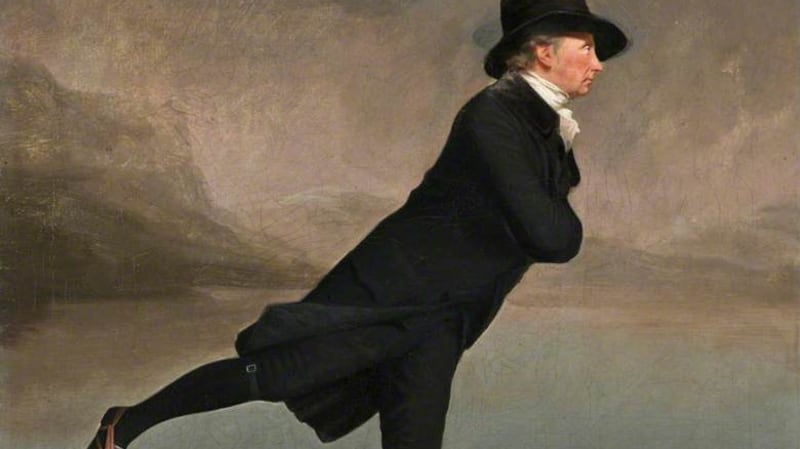Roger Grimes is based in the Greenway Antiques and Bookshop at The Old Thatch, Mulrany, Co Mayo. Born in England, he moved to Ireland 26 years to set up the business. He shares the premises with his partner, Vanessa Parker, who runs a separate rare books business.
What is your background?
I grew up in a 15th-century house in the beautiful village of Blickling in Norfolk, England. My dad was a foreman-manager for the National Trust which cares for the Blickling estate and was in charge of five villages. He would visit the old farm tenants and offer 10 bob or so for an 18th-century flintlock pistol, sword or copper kettle. As kids we roamed and played in the wonderful wooded, lakeside countryside. We would play pirates – with real swords and bows and arrows. It's a wonder we survived. I left school at 15 in 1964 and became an apprenticed carpenter and joiner at Blickling Hall, the 17th-century Jacobean mansion which was the birthplace of Anne Boleyn, who lost her head after marrying King Henry VIII.

On my first day at work, I climbed the hundreds of steps to the top of the clocktower. A hatch was open and I stepped out into the frozen air – that took my breath away – on to the ice-covered, lead roof. I slid off it, across to the scaffold and luckily hit the toe board, stopping me falling 110 feet to the dry moat. The foreman took me – shaking – to the canteen for sweet tea but then made me go back up. I finished my apprenticeship and eventually set up a business as a carpenter. In 1977, after an overland trip to India with three friends, I returned to the love of my life – my partner, Vanessa, who is from Lincolnshire – and we have been together ever since.
How did you get into the antiques business?
My late father's shed was full of great old items that needed clearing. A new antiques market was starting in Sheringham [Norfolk] and I made a Victorian-style stall and used to sell some of the items. We made £80 on the first Saturday morning – a fortune for us then. We were hooked and we began to visit museums, antiques shops, auction houses and then, after a couple of years, started to do antiques fairs. Vanessa became well known for her stock of early children's and illustrated books and fine bindings and I specialised in antique items that had a real purpose or actually did something – such as early furniture and metalware.
Why did you move to Ireland?
Vanessa and I had no connections to Ireland but we were heavily into Irish folk music in the 1980s, groups like The Chieftains and Dé Danann. We visited Ireland for the first time in 1985, when everything was falling apart in England. We stayed in a tent and went to Doolin for the music. We fell in love with Ireland and came back regularly for holidays. Eventually we found a house we wanted to buy near Westport. We fell in love with Ireland – and the Irish – and moved here permanently in 1990.
A few years later, we joined the Irish Antiques Dealers Association and this really helped us to get established here. We sell at antiques fairs in the RDS and at various provincial fairs.
Career highlight?
About 20 years ago, I bought a complete porcelain dessert service for £800. It was decorated in gold leaf and was hand-painted with roses by the founder of the Coalport factory, John Rose, circa 1790. When I showed it in an antiques fair it Dublin, some of the other dealers pooh-poohed it. I priced it at £8,000 but there was nobody interested. Later, I offered to a dealer in Cork for £5,000, but he also declined. Eventually I sent images of it to an expert in London who was very excited. I eventually sold it in London at auction for £21,000 sterling.
What advice would you give collectors/investors?
My advice is to buy now because prices are ridiculously low, but things are beginning to rise and, I think, will continue to. Buy what you like, and the best you can afford, from a reputable dealer. Auction houses can provide great bargains but have no guarantees and can have pitfalls. Early Irish silver and furniture is undervalued.
What do you personally collect?
I’m a bit of a hoarder and like collecting folk art – quirky, handmade things. The house is very full and creaking at the seams. We have tons of books and there’s not really room for us and our three dogs and the cat.
What would you buy if money were no object?
I would buy a period house and fill it with early oak and walnut furniture, tapestries, paintings and early domestic metalware. I would have lots of dogs and cats – and horses outside. Heaven!
What is your favourite work of art?
The Reverend Robert Walker Skating on Duddingston Loch by Henry Raeburn. Although I've never seen it in the flesh – only illustrated in books – I think it's quirky and I love it. The painting, also known simply as The Skating Minister, dates from the late 18th century and shows a clergyman skating on a frozen lake. It hangs in the National Gallery of Scotland in Edinburgh.
rogergrimesantiques.com









